 It didn’t take us long to fall in love with Tiger Style’s first game, Spider: The Secret of Bryce Manor [App Store]. It has a beautiful simplicity to it: you are a spider, and as a spider you spin webs and eat bugs. You can choose to explore the various rooms of Bryce Manor, or you can ignore your surroundings and just go on an insect feeding frenzy.
It didn’t take us long to fall in love with Tiger Style’s first game, Spider: The Secret of Bryce Manor [App Store]. It has a beautiful simplicity to it: you are a spider, and as a spider you spin webs and eat bugs. You can choose to explore the various rooms of Bryce Manor, or you can ignore your surroundings and just go on an insect feeding frenzy.
28 hand drawn levels paired with great music and a clever method of storytelling puts Spider pretty high on my list of personal favorites, and judging by the forum response, I’m not alone. If you haven’t heard of the game yet, check out our review and watch this trailer that was recently put together by the developers:
After playing through Spider, we wanted to know more about the people behind it and what went into a game that is currently sitting at 146 5-star ratings on iTunes. We tracked down Randy Smith and David Kalina, the two people behind Tiger Style to ask them a few questions about their past, the development of Spider, and what’s in store for the future.
TouchArcade / Eli Hodapp: Can you tell us more about your backgrounds in video game development and how your development team was assembled?
Randy Smith: My first project in professional game development was as a designer on Thief: The Dark Project back in 1997. This game was made at a legendary, now-defunct, design boutique called Looking Glass Studios, at which I was very lucky to kick off my career. Since then, among other things, I have been the Project Director of Thief: Deadly Shadows, and a Creative Director at Electronic Arts Los Angeles working on a video game collaboration with Steven Spielberg. I also have the good fortune to write a monthly column in the UK’s finest gaming magazine, Edge, and I am a frequent speaker at the Game Developer’s Conference, the Montreal International Game Summit, and similar conferences.
When the time came to start a new studio, I took a ground-up approach, meaning that although I had a basic idea of the culture and organization I wanted it to become, I also wanted to adapt that vision depending on who got involved, essentially leaving space for the team itself to drive the company’s identity and direction.
I sent feelers out to a group of folks that had been among my favorite creative collaborators: former co-workers, college classmates, old friends that I’d worked with on independent projects, and so forth, all people whose talents and vision I deeply respected and who I thought would work well together. When David signed on and immediately began making strong, consistent contributions, I quickly decided he had as much stake in the company’s success as I did and invited him to co-own the company with me.

Tiger Design from top left to bottom right: Jon Whitmore, Scott Barber, Jen Cha, Jef Drawbaugh, Randy Smith, Theron Jacobs, Amanda Williams, David Kalina, Julia Tabor, Brennan Carr, Ethan Greene, and Rick Tossavainen.
David Kalina: I spent most of the last decade as an AI programmer for AAA console games. I worked on the original Splinter Cell at Ubi Soft Montreal, then moved down to Austin, where I worked on the AI for Deus Ex: Invisible War and Thief: Deadly Shadows, which is where Randy and I first worked together. I spent the intervening 3.5 years working on the Criminal project at Midway before it was canceled.
Randy asked me if I wanted to do something crazy and risky and start an iPhone company back in November. At the time, it seemed like the perfect antidote to years and years of working for a large game developer on a game that nobody ever played.
TouchArcade: What made you decide on develop for the iPhone? Any plans to port it to other platforms?
DK: We decided to be iPhone developers on Day 1. The iPhone is a fascinating device to design for, as it has so many potential inputs to play with: the touch-screen, the accelerometer, the camera, the GPS functionality. On top of all that, it’s nearly ubiquitous, many of our friends carry one around all the time, and we were excited to make games that so many of our friends and family would have access to.
Also, the barrier to entry is incredibly low: you need a Mac and a $99 developer account to get started. Add that to some of the early Gold Rush stories about guys like the Trism and iShoot developers getting rich, and we thought we could definitely be successful in the iPhone space.
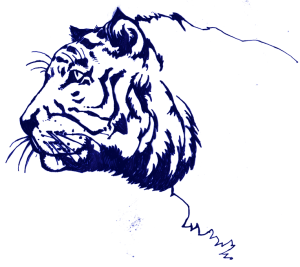 RS: Our hope is that we’ll find a comfortable home in the iPhone market, in terms of a receptive audience and enough income to pay the bills. We could theoretically port our games, but that’s not where our passion lies. We’d rather be out there making something new.
RS: Our hope is that we’ll find a comfortable home in the iPhone market, in terms of a receptive audience and enough income to pay the bills. We could theoretically port our games, but that’s not where our passion lies. We’d rather be out there making something new.
TouchArcade: How did you decide on the Spider mechanic for your first game? You mentioned it took 8 months to develop the game?
RS: We discussed a large number of possible concepts to develop before we settled on Spider, but once we had a Spider prototype running, it was so promising that we knew we didn’t need to try exploring any further. The prototype demonstrated the basic controls and web building mechanics, and the overall game structure (linear sequence of levels, minimum insect requirement to progress, etc.) followed pretty quickly. The project took another 6 or more months after that to design and build all of the content, especially the levels. In the meantime, David kept augmenting and refining the functionality of Spider, making constant improvements and adding large features like the Facebook Connect.
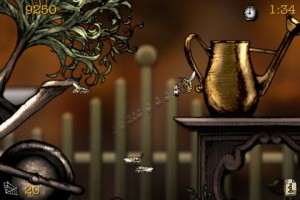 The levels took so long to develop because each of them is the output of painstaking research and photographic reference collection, cut apart and pieced back together into a layout that would be visually pleasing, functional for web building gameplay, appropriate to the story and setting, and compatible with our cross-sectional view. Often this was an iterative process, meaning a given level would be designed and redesigned multiple times until we got it right. Converting these designs into game-ready art involved handing them off to our art team of about 4 artists, who, using traditional art materials, Wacom tablets, and Photoshop, recreated them in Spider’s signature style of digital illustration.
The levels took so long to develop because each of them is the output of painstaking research and photographic reference collection, cut apart and pieced back together into a layout that would be visually pleasing, functional for web building gameplay, appropriate to the story and setting, and compatible with our cross-sectional view. Often this was an iterative process, meaning a given level would be designed and redesigned multiple times until we got it right. Converting these designs into game-ready art involved handing them off to our art team of about 4 artists, who, using traditional art materials, Wacom tablets, and Photoshop, recreated them in Spider’s signature style of digital illustration.
DK: The 8 month development all took place after we decided on Spider as the concept. Randy was moving cross-country back in December, which worked out fairly well as I used that time to start building the technology and prototyping the basic concept. We were originally hoping (rather optimistically) to finish our first game before GDC in March, but we were quite off on our initial estimates.
The original concept called for an accelerometer-based spider movement, but our first play test (back in February) indicated that it was the wrong approach. We iterated on the touch-to-walk movement mechanics many times, up until the final month of the project, before settling on the current system. Swipe-to-jump, on the other hand, really only had one major revision in its lifespan. The original version was just a little bit too hard to control because it attempted to map directly to the speed of the player’s finger, so in other words you could jump at large, analog range of velocities. We instead switched to a version where your swipe is mapped to either a slow jump or a fast jump. After this, our play testers became much more comfortable with the controls, and we knew we were onto a good thing.

TouchArcade: Was there ever a point where you felt you were spending way too much time developing the game?
DK: It was originally our intent to spend 4 months on this project, not 8, so it certainly got to a point where we were nervous about burning for too long on this particular project. Randy and I are both perfectionists, to some degree. Because of this, it was easy for us to constantly find new things that needed improving on.
We talked sometimes about trying to “take the bottom out" when polishing the game. In other words, we would identify the part(s) of the game that were most offensive / ugliest / least playable, and then work to make that part better or remove it entirely. The difficulty with this approach is that every time you take something crappy and make it better, something new stands out as being crappy and in need of fixing.
We were committed to making a quality app from the beginning, and I am proud that we stuck to our guns and didn’t compromise. Our strategy was to stand out in the market by making something better than 99% of the App Store. It’s incredibly risky and challenging to set out to do that, but if we didn’t believe we were capable of accomplishing that goal, we probably wouldn’t have started the business in the first place. Even still, we now have to sell a very significant number of copies to make our business sustainable, so it’s not yet clear if the strategy has paid off.
 RS: I agree wholeheartedly with David. My ambition has always been to make innovative, high quality software for the iPhone, because it is a platform that I believe in having a strong potential to make a positive impact on gaming and interactive art. Market forces are a reality that you always have to respect, but that doesn’t mean you have to conform to them completely, and if we felt like our only option for being iPhone developers was to release quick, cheap, low quality games, then we would probably decide to seek out a more suitable home for our creative efforts. Our hope was that there was a niche left open in the app store market for high quality, original works, and our success so far seems to indicate that was the case. Spider has really picked up a ton of momentum largely with word of mouth, seemingly based on it being a high quality offering. The question for us now is whether we will reach enough people for that to translate into sustainable income, but so far we are feeling pleased with the response. Hopefully quick, cheap games can coexist alongside longer, less cheap games.
RS: I agree wholeheartedly with David. My ambition has always been to make innovative, high quality software for the iPhone, because it is a platform that I believe in having a strong potential to make a positive impact on gaming and interactive art. Market forces are a reality that you always have to respect, but that doesn’t mean you have to conform to them completely, and if we felt like our only option for being iPhone developers was to release quick, cheap, low quality games, then we would probably decide to seek out a more suitable home for our creative efforts. Our hope was that there was a niche left open in the app store market for high quality, original works, and our success so far seems to indicate that was the case. Spider has really picked up a ton of momentum largely with word of mouth, seemingly based on it being a high quality offering. The question for us now is whether we will reach enough people for that to translate into sustainable income, but so far we are feeling pleased with the response. Hopefully quick, cheap games can coexist alongside longer, less cheap games.
TouchArcade: Was staying under the radar intentional with this game’s release?
DK: Definitely not! Randy and I are game developers first and foremost, so even though we talked throughout development about strategies for revealing the game to the public before release, ultimately we were consumed with finishing the game before doing any of our promotional work. We were accepted by Apple far more quickly than we expected, so when the game was released into the App Store, we were mostly unprepared. Our trailer video and websites were in development, but not yet finished.
It has been fascinating to watch the game spread, though, because it does have an almost purely viral activity right now. There were maybe a couple hundred people in the world (friends and family) who knew of the game before we shipped, so everything that has happened so far — cracking the Top 100 Paid Apps in the US, for example — was done entirely through word of mouth.
RS: I’m not a big lover of hype. If our games are worthy of superlative descriptions, then it is the fans who have the right to bestow those descriptions, which they can’t do unless they’ve played the game. So if anything, I think it makes sense to show off a little of what we’re doing ahead of time, shop it around, and see how people respond, but not to try to convince them with words that we’re the best or awesomest – their evaluations have to wait until the game is released.
Given all that, we still had envisioned a promotional effort ahead of time where we make early contact with a select few sites, develop our trailer and have it ready to go, and have a website where people can see the game and learn more about it, and the usual things. But I don’t mind how things worked out; it’s nice to grab people’s attention by coming out of nowhere with a solid product as opposed to trying to convince them in advance that they should pay attention to you.
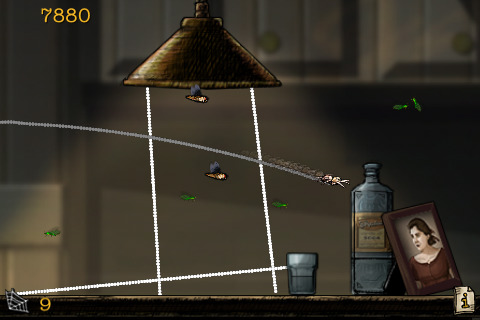
TouchArcade: Was there anything you wanted to do in Spider that wasn’t possible due to time limitations, hardware limitations, etc? What would like to implement in the future through updates?
RS: Compared to every other project I’ve worked on, I have very few regrets with how Spider turned out, and that’s because we gave ourselves the liberty to keep working on it until we felt great about it, which is very rare in the world of AAA console development. There are plenty of little ideas and improvements we would have liked to try, and there are edges we would have liked to smooth and polish even further, but I’m very comfortable saying we got to everything and more that was actually important to the game’s quality.
That said, there are parts of the manor and Bryce family secrets that weren’t in version 1.0, so our intent in the coming months is to release a “Director’s Cut” of the story featuring new levels that cast more light on the story. I’m particularly excited that our fans familiar with Spider 1.0 will see how the new levels slot right into the current version of the game. Sorta like we planned it in advance.
TouchArcade: One of the thing that really sticks out for me in Spider is how remarkably clever the story of the game is delivered. In the original concept of the game, did it always revolve around a spider?
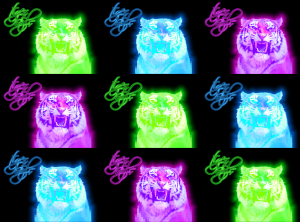 RS:
Developing solid mechanics that the player can use to drive their own experience is a prerequisite to the kind of games we want to build, so the spider and the web building came first. Once you have that, I don’t think it’s hard to add narrative to any experience, and it was a fun process to understand and depict a human story from the perspective of a spider. The method of telling a story by exploring an environment is a staple in the types of games David and I have worked on or loosely been associated with – Thief, Deus Ex, System Shock, Bioshock, etc..
RS:
Developing solid mechanics that the player can use to drive their own experience is a prerequisite to the kind of games we want to build, so the spider and the web building came first. Once you have that, I don’t think it’s hard to add narrative to any experience, and it was a fun process to understand and depict a human story from the perspective of a spider. The method of telling a story by exploring an environment is a staple in the types of games David and I have worked on or loosely been associated with – Thief, Deus Ex, System Shock, Bioshock, etc..
The story was always meant to draw interested users in very subtly. Harvey Smith, the Project Director of Deus Ex: Invisible War and a brilliant game designer who is a friend and colleague of David’s and mine, described the difference as a “push” versus a “pull” story. When games interrupt your experience with cut scenes or books you might not want to read, they are being pushy. When players notice a story thread that draws their interest, they can pull on it and get more story. We built a game where the story doesn’t have to command your experience, so there was never a time when we thought it should be forced upon players.
This is very compatible with the fantasy of being a spider, because what does a spider care about human concerns? We were drawn to these visions of a spider building webs off of objects that would have emotional significance to a human, but for a spider they are just tools for catching bugs. The next human who comes across Bryce Manor after our hero has left will need to brush aside the cobwebs to examine the history of the Bryce family. We wanted you to play the role of the spider who left those cobwebs.
TouchArcade: How much did the art style in Spider change from the original concepts to the game we’re playing now?
RS: The original concept document depicted Spider as a photoreal game. If you look on Flickr, you’ll see that photographers have an obsession with shooting the insect world with macro lenses that magnify small details and have a very tight focal plane, and we thought that look would help capture the feeling of being a tiny creature in a huge world, where for example the kitchen sink looks like a blurry mountain in the distance. Eben Cook, a hugely talented and versatile artist I worked with at Electronic Arts, pitched in for a couple weeks to help us through this phase. Eben produced an amazing proof of concept, and it gave the game an almost sterile, hyperreal look and made the world seem beautiful and glossy.
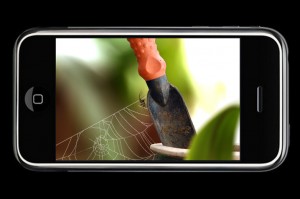 We were stoked by this direction, but we were worried about the art pipeline, which would require a lot of photography and image manipulation that seemed very time consuming and which we weren’t sure how best to achieve. A particular worry was that the process was not very flexible with respect to gameplay design. If we photograph a chair, and play test suggests that the chair needs to be shot from a different angle to be good for gameplay, we better hope we still have access to that same chair.
We were stoked by this direction, but we were worried about the art pipeline, which would require a lot of photography and image manipulation that seemed very time consuming and which we weren’t sure how best to achieve. A particular worry was that the process was not very flexible with respect to gameplay design. If we photograph a chair, and play test suggests that the chair needs to be shot from a different angle to be good for gameplay, we better hope we still have access to that same chair.
Also by this time, the Spider story was starting to emerge, and it was inspired in part by the works of Edward Gorey, whose creepy, crosshatched illustration style I’d always felt would make a fantastic art direction for a game, especially one set in an old mansion. Once again, Eben led the way, providing a proof of concept for this very different direction for the game’s art. We needed to add a better sense of depth than Gorey’s deliberately flat art, so we maintained the sense of a tight focal plane. As I used to say, “the game is seen through a camera which is located in an illustrated world,” so therefore the backgrounds are a little bit blurry. This direction for the art style rapidly grew on us, especially as we envisioned all of the character and atmosphere it could convey.
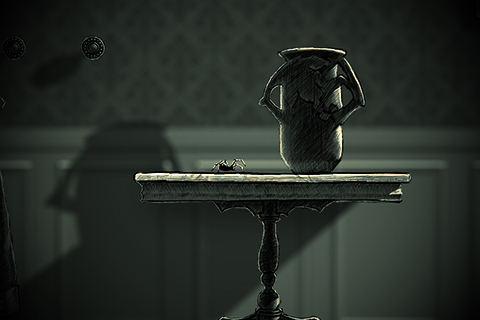
Soon after, Eben moved on to other pursuits, but his efforts had established the right direction, and the art team and I worked together to refine it, making it a little less sketchy, adding more richness and depth, and arriving at a sweet spot between traditional illustration and digital manipulation that we all really loved.
TouchArcade: When in the development process did you select the soundtrack and do you have any plans to release it?
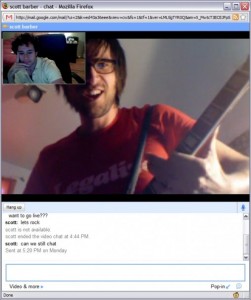 DK: We started working with our musicians (Scott Barber and Jef Drawbaugh) back in the second month of the project. Randy established a vision early on by pulling some sample tracks that had an organic electronica vibe to them, which felt appropriate to being a spider by communicating the sense of “meticulous work,” as one of the team members put it. Randy provided some basic guidance to the musicians, but we mostly let them develop their songs independently, then we came together at the end of a song’s production to iterate and get the tracks feeling just right. Randy wrote one song for the game late in the project and then we took a couple of passes at mapping the final music onto the final levels.
We fully intend to make the soundtrack available through our website in the near future.
DK: We started working with our musicians (Scott Barber and Jef Drawbaugh) back in the second month of the project. Randy established a vision early on by pulling some sample tracks that had an organic electronica vibe to them, which felt appropriate to being a spider by communicating the sense of “meticulous work,” as one of the team members put it. Randy provided some basic guidance to the musicians, but we mostly let them develop their songs independently, then we came together at the end of a song’s production to iterate and get the tracks feeling just right. Randy wrote one song for the game late in the project and then we took a couple of passes at mapping the final music onto the final levels.
We fully intend to make the soundtrack available through our website in the near future.
TouchArcade: What do you have planned for the future of Tiger Style?
DK: For now, it’s full time promotional work on Spider for a month or two, including an update and a lite version. After that, we intend to start work on Game 2. It is really important for us as a developer to demonstrate our creative range, so we are going to work on something other than Spider for a little while. If Spider‘s popularity stays strong, it will be hard for us to not eventually want to revisit the property and build on its success, but we have no concrete plans yet.
Both Randy Smith (Randy Smith) and David Kalina (David Tiger) have been active participants in TouchArcade’s forums.
App Store Link: Spider: The Secret of Bryce Manor, $2.99